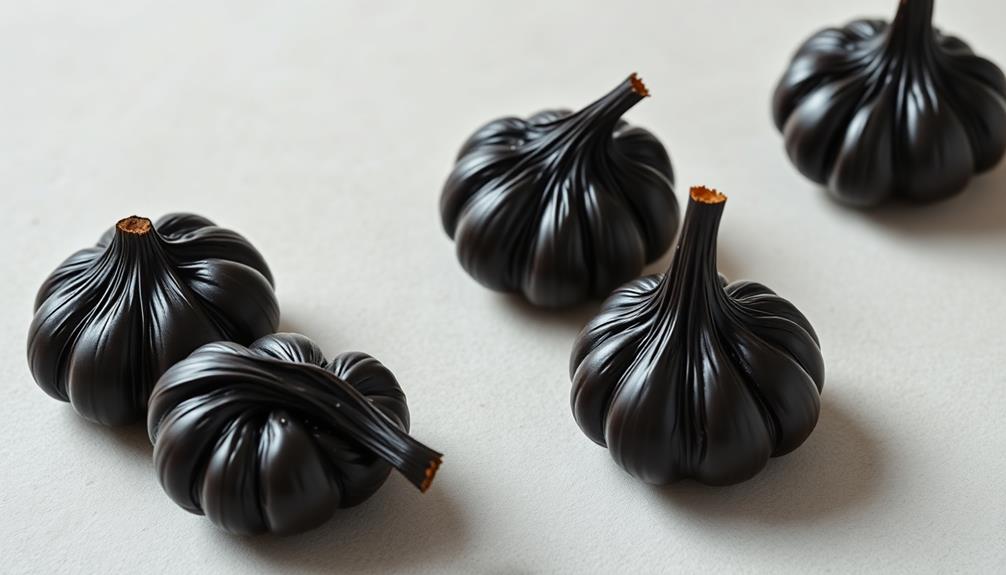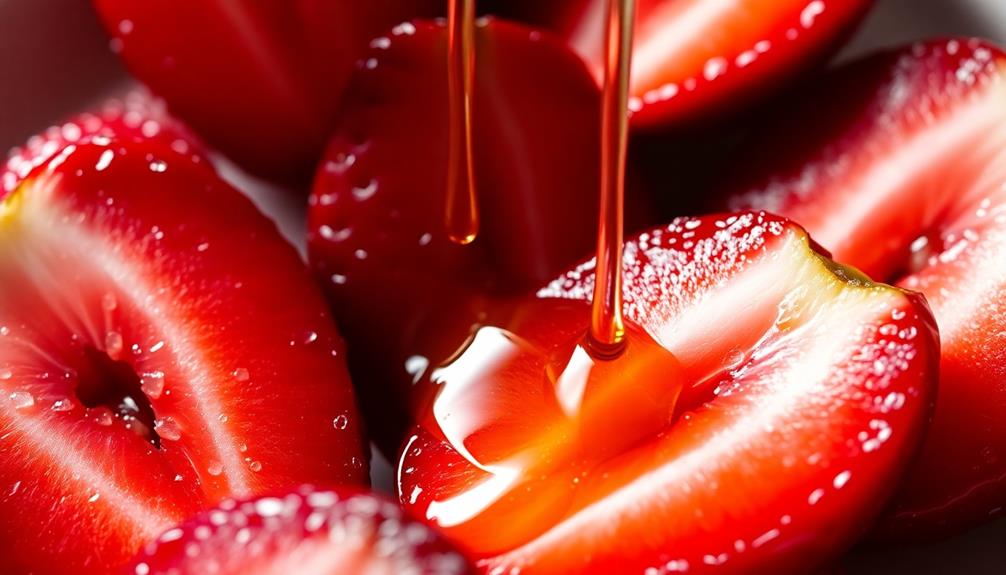You're about to discover why jackfruit is quickly becoming the trendy, sustainable meat alternative that's taking the culinary world by storm. Native to South and Southeast Asia, this versatile fruit boasts a unique texture and mild flavor that makes it an excellent substitute for meat in a variety of dishes, from tacos to pulled "pork." As concerns about the environmental impact of traditional meat production grow, more and more people are turning to jackfruit as a delicious, plant-based protein source that's good for both you and the planet. And there's so much more to learn about why this remarkable fruit is capturing the world's attention.
Key Takeaways
- Jackfruit has gained popularity as a meat substitute due to its unique texture, mild flavor, and versatility in various dishes.
- The rising demand for plant-based meat alternatives, combined with jackfruit's health benefits and sustainability, is driving its global recognition as a sustainable protein source.
- Jackfruit's adaptability allows for the development of innovative recipes and culinary techniques, inspiring chefs and home cooks to explore plant-based cooking.
- The increased production and distribution of jackfruit could have positive environmental impacts, such as reducing greenhouse gas emissions and promoting sustainable agriculture practices.
- Jackfruit's affordability and accessibility, especially in various forms, make it a viable option for low-income households, contributing to its potential as a staple food.
History
Jackfruit has a long and storied history as a food source, particularly in tropical regions. Native to parts of South and Southeast Asia, this massive fruit has been a dietary staple for centuries. In fact, records show that jackfruit was cultivated in India as early as the 6th century AD!
Over time, the versatile jackfruit spread to other parts of the world, including Africa, the Caribbean, and even Brazil. As people discovered its unique texture and mild flavor, it began gaining popularity as a meat substitute.
Interestingly, unripe jackfruit has a stringy, pulled-pork-like consistency, making it an excellent alternative for vegetarians and vegans.
Today, jackfruit is enjoying a surge in global recognition, with more and more people discovering its potential as a sustainable, plant-based protein source. Its rising popularity is a testament to the enduring appeal of this ancient, versatile fruit.
Recipe
Jackfruit is a versatile and nutritious fruit that can be used as a fantastic meat substitute in various dishes. Its firm texture and ability to absorb flavors make it an excellent choice for those looking to incorporate more plant-based options into their diets.
This recipe for a jackfruit-based dish showcases the fruit's remarkable versatility and provides a delicious, meat-free alternative that can be enjoyed by all. Whether you're a seasoned vegetarian or simply curious about exploring new plant-based ingredients, this recipe is sure to delight your taste buds.
Ingredients:
- 2 cans (20 oz each) young green jackfruit, drained and shredded
- 1 onion, diced
- 3 cloves garlic, minced
- 1 tablespoon olive oil
- 1 teaspoon chili powder
- 1 teaspoon cumin
- 1 teaspoon smoked paprika
- 1 teaspoon salt
- 1/2 teaspoon black pepper
- 1 cup barbecue sauce
Cooking Instructions:
In a large skillet, heat the olive oil over medium heat. Add the diced onion and minced garlic, and sauté until the onion is translucent and the garlic is fragrant, about 5 minutes.
Add the shredded jackfruit, chili powder, cumin, smoked paprika, salt, and black pepper. Stir to coat the jackfruit evenly with the spices.
Pour in the barbecue sauce and continue to cook, stirring occasionally, until the jackfruit is heated through and the flavors have melded, about 10-15 minutes.
Tips:
When selecting canned jackfruit, be sure to choose the young, green variety, as it has a more neutral flavor and firmer texture that's better suited for use as a meat substitute.
Additionally, feel free to experiment with different barbecue sauce flavors or even make your own homemade version to personalize the dish to your taste preferences.
Serve the jackfruit mixture on buns, in tacos, or over a bed of rice or greens for a satisfying and protein-packed meal.
Cooking Steps
First, you'll need to soak the jackfruit in some salty water to help remove any bitterness.
Next, shred the jackfruit into long, thin strips using your hands or a fork.
Finally, sauté the jackfruit strips in a pan with your favorite seasonings until they're warm and delicious.
Serve this meat-free delight however you like!
Step 1. Soak Jackfruit in Salty Water

After selecting the young, green jackfruit, it's time to prepare it for the next step in the cooking process. First, you'll want to soak the jackfruit in salty water. This helps remove any bitterness and softens the tough texture.
Start by filling a large bowl with cool water. Add a tablespoon of salt and stir until it's fully dissolved. Gently place the peeled and chopped jackfruit pieces into the salted water. Let them soak for about 30 minutes, giving them a gentle stir occasionally.
This simple step makes a big difference, ensuring your jackfruit is ready to take on delicious flavors later on.
After the soaking time, drain the jackfruit and rinse it under cool running water. Pat the pieces dry with paper towels or a clean kitchen towel.
Now the jackfruit is prepped and ready for the next exciting stage of the cooking journey. Get ready to unlock its full potential as a tasty, versatile meat alternative!
Step 2. Shred the Jackfruit Into Strips

With the jackfruit prepped and ready, you can now move on to shredding it into strips. This step is where the magic really happens! Grab your trusty knife or food processor and get to work.
Carefully slice the jackfruit into thin, long strips, making sure to get every last bit. Don't be afraid to get a little hands-on – the texture of the jackfruit is firm yet yielding, perfect for mimicking the look and feel of shredded meat.
As you work, you'll notice the jackfruit's natural fibers start to separate, creating that signature stringy look. Keep going until you've transformed the whole fruit into a pile of tender, meaty-looking strips.
It's like watching a transformation happen right before your eyes! With the jackfruit now shredded, you're one step closer to creating a delicious, plant-based dish that's sure to impress. Get ready to unleash the power of this incredible ingredient!
Step 3. Sauté the Jackfruit Strips

Next, heat a large skillet or sauté pan over medium-high heat. Once it's hot, add a bit of oil and let it shimmer.
Now, carefully add the shredded jackfruit strips. Spread them out in a single layer so they can brown evenly.
Sauté the jackfruit, stirring occasionally, until it starts to caramelize and turn golden-brown, about 8 to 10 minutes. The high heat will help the jackfruit develop a nice crispy texture on the edges.
As the jackfruit cooks, you'll notice it releases some liquid. That's okay – just keep cooking until most of the moisture has evaporated. This will concentrate the sweet and savory flavors of the jackfruit.
Once the jackfruit is nicely browned, you can season it with a pinch of salt, pepper, or any other spices you enjoy.
Toss everything together to coat the jackfruit evenly. Now it's ready to be used in your favorite recipes as a tasty meat alternative!
Step 4. Add Desired Seasonings

Now that the jackfruit has nicely browned, it's time to season it to your liking. You can really make this dish your own by adding your favorite spices and herbs.
Try sprinkling on some garlic powder, onion powder, and smoked paprika for a savory, smoky flavor. Or, if you're in the mood for something a little more zesty, add a dash of chili powder, cumin, and oregano.
Don't be afraid to get creative! You could even mix in some fresh chopped cilantro or parsley for a pop of freshness.
Remember, the key is to start with small amounts of each seasoning and then taste as you go. That way, you can perfectly balance the flavors to your personal preference.
Once you've found the perfect blend, give the jackfruit a good stir to make sure the seasonings are evenly distributed.
Now, your jackfruit is ready to be the star of the show!
Step 5. Serve Warm or at Room Temperature

After seasoning the jackfruit to your liking, you can serve it warm or at room temperature.
Warm jackfruit creates a cozy, comforting meal. To serve it warm, simply reheat the prepared jackfruit in a skillet or oven until it's heated through. This brings out the savory, meaty flavors and softens the texture.
On the other hand, serving jackfruit at room temperature works well for picnics, potlucks, or as a quick snack. The natural coolness of the fruit complements the spices and seasonings. You can even chill the jackfruit in the refrigerator before serving for a refreshing option on a hot day.
Whichever way you choose to serve it, jackfruit makes a delicious and versatile meat alternative. Its substantial texture and ability to absorb flavors make it a fantastic plant-based option.
Enjoy your jackfruit, whether warm and satisfying or cool and refreshing!
Final Thoughts
Ultimately, how might the increasing popularity of jackfruit as a meat substitute impact the future of the food industry? As more people discover the versatility and health benefits of this remarkable fruit, it's likely that jackfruit will continue to gain traction as a viable meat alternative.
This could lead to greater innovation and experimentation with plant-based proteins, potentially revolutionizing how we think about traditional meat-based dishes.
Imagine a world where jackfruit-based burgers, tacos, and even barbecue become household staples. The environmental benefits of this shift could be significant, as the production of plant-based foods typically has a smaller carbon footprint than that of traditional meat.
Additionally, the accessibility and affordability of jackfruit may make it an appealing option for families and individuals seeking more sustainable and nutritious meal choices.
As the culinary landscape evolves, the rise of jackfruit as a meat substitute could inspire chefs and home cooks alike to explore new culinary frontiers, ultimately shaping the future of the food industry.
Frequently Asked Questions
Is Jackfruit Good for Weight Loss?
Jackfruit can be a great option for weight loss. It's low in calories, high in fiber, and has a satisfying texture that can help you feel full. Plus, it's packed with nutrients that support overall health.
How Much Protein Does Jackfruit Contain?
Jackfruit doesn't contain a significant amount of protein – it's got about 3 grams per 1 cup serving. So while it's a tasty and versatile fruit, it's not the best choice if you're looking to boost your protein intake.
Can Jackfruit Be Eaten Raw?
Yes, you can eat jackfruit raw. It has a unique, slightly sweet flavor and a soft, creamy texture when ripe. However, be aware that unripe jackfruit may taste bitter and contain latex.
Is Jackfruit Safe for People With Diabetes?
Yes, jackfruit is generally safe for people with diabetes. It's low in calories and carbs, and high in fiber, which can help manage blood sugar levels. However, it's still important to monitor your intake and speak with your healthcare provider.
How Long Does Cooked Jackfruit Last in the Fridge?
Cooked jackfruit can typically last 3-5 days in the fridge when stored properly. Keep it in an airtight container and enjoy within that timeframe for the best quality and safety.










